
Blessed Beltane!
Beltane is the name and celebration of May Day. It’s an ancient spring and summer festival that people from many cultures have celebrated for thousands of years in the northern hemisphere, and it falls on April 30th and May 1st. This article is a general overview of Beltane customs and traditions from various European regions.
May Seasonal Guide: Beltane
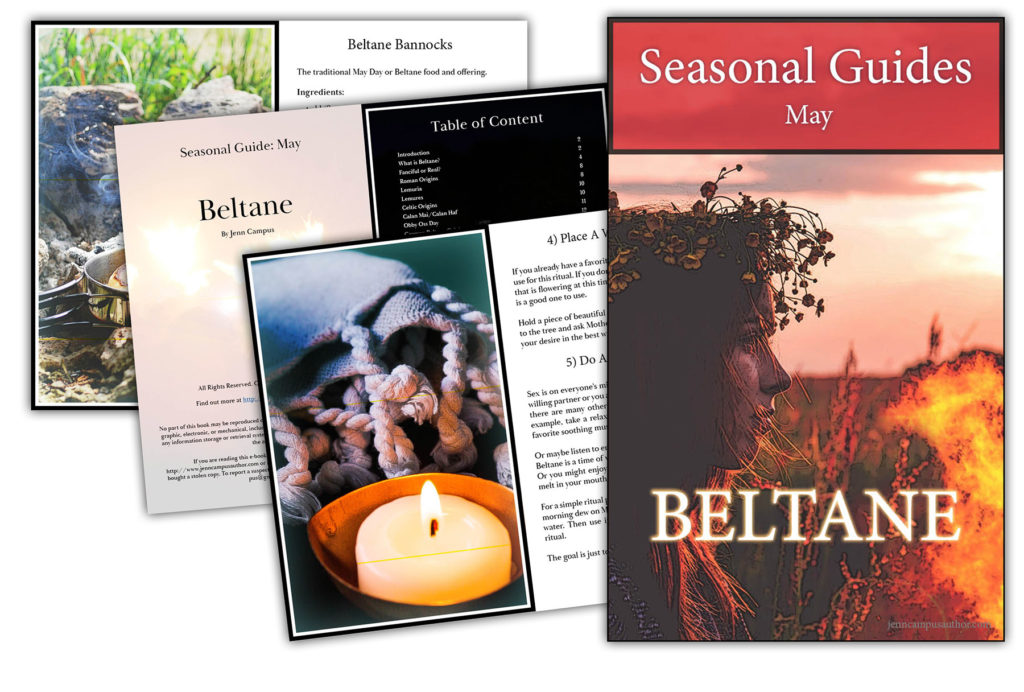
For a more in-depth look at Beltane, you can download the May Seasonal Guide, Beltane. It’s one of the most popular Monthly Seasonal Guides we’ve published! Includes 60+ pages of folklore, history, activities, rituals & recipes so you can celebrate this ancient festival at home. It includes the specifics of many regional celebrations that still take place in some way today to inspire you to create your own meaningful Beltane traditions.
Old Ways For Modern Days Podcast: Beltane Episode
Beltane Primer: All you need to know about Beltane, the ancient spring & summer festival that people from many cultures have celebrated for thousands of years in the northern hemisphere on April 30th & May 1st. Includes history, folklore, stories, & how modern folks can celebrate.
In the 25-minute episode:
*Three Billy Goats Gruff
*How & why Land Spirits are honored in May
*Land Spirt Offerings
*Sacred Fire’s role in Beltane Celebrations
* Various European May Celebrations
*Bringing in the May
*The Meaning of the Maypole
* Maggio Di Accettura
*Floralia
*Walpurgis
What is May Day
Some people associate the name May Day with International Workers’ Day, a secular holiday started by socialists and communists to commemorate the Haymarket affair in Chicago. Although “May Day” can also refer to International Workers’ Day, it is an entirely different celebration from traditional May Day. In some countries, like Finland, May 1st is a combined celebration of students, workers, and the agrarian beginning of Summer.
Although the Summer Equinox does not come until June, many scholars and folklorists say that Beltane (or its equivalent) marked the beginning of summer in many ancient cultures.
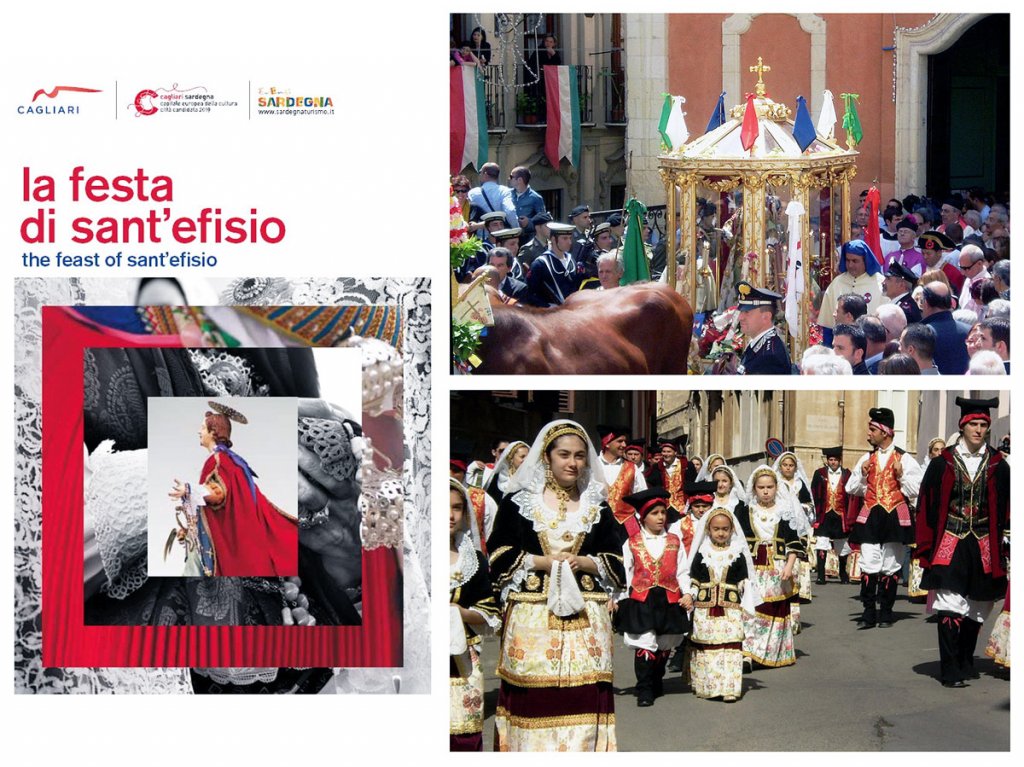
May Day in Sardinia
Most Italians celebrate May Day as International Workers’ Day, but in Sardinia, people celebrate the Feast of Sant’ Efisio. Long ago this feast day was combined with a local spring harvest festival in the capital of Cagliari. However, it has since grown. In recent years thousands of people from all over Sardinia dress in their regional traditional clothes and celebrate the various areas and traditional industries of Sardinia.
Who is Saint Efisio?
Emperor Diocleziano sent Efisio, a Roman officer to suppress Christianity on the island of Sardinia.
Instead, he became an ardent follower of the new religion. So Roman officials asked him to renounce his new faith, but he refused and was thus sentenced to death. Initially, they imprisoned him in Cagliari but later moved him to a secret location near the coast in anticipation of his execution by a fellow Roman soldier. To honor him, the people of Cagliari built a church on the spot of his execution.
Efisio’s Legacy
In 1652, Sardinia was overwhelmed by a plague that killed half of the inhabitants of Cagliari. In their desperation, the people turned to their saint, Efisio di Elia, to intervene. Local leaders publicly announced that if entreating Saint Efisio stopped the plague, then every year forever after, the people of Cagliari would carry his statue in a procession from the church in Cagliari to the one in Nora, where Efisio was beheaded and martyred. The plague disappeared, and so the festival has continued every year since 1652.
Efisio’s reputation is still solid among the local people. Besides ending the plague, they also give him credit for saving the city from a French siege in 1793 and for helping the people rebuild the city after it was badly damaged during WWII.
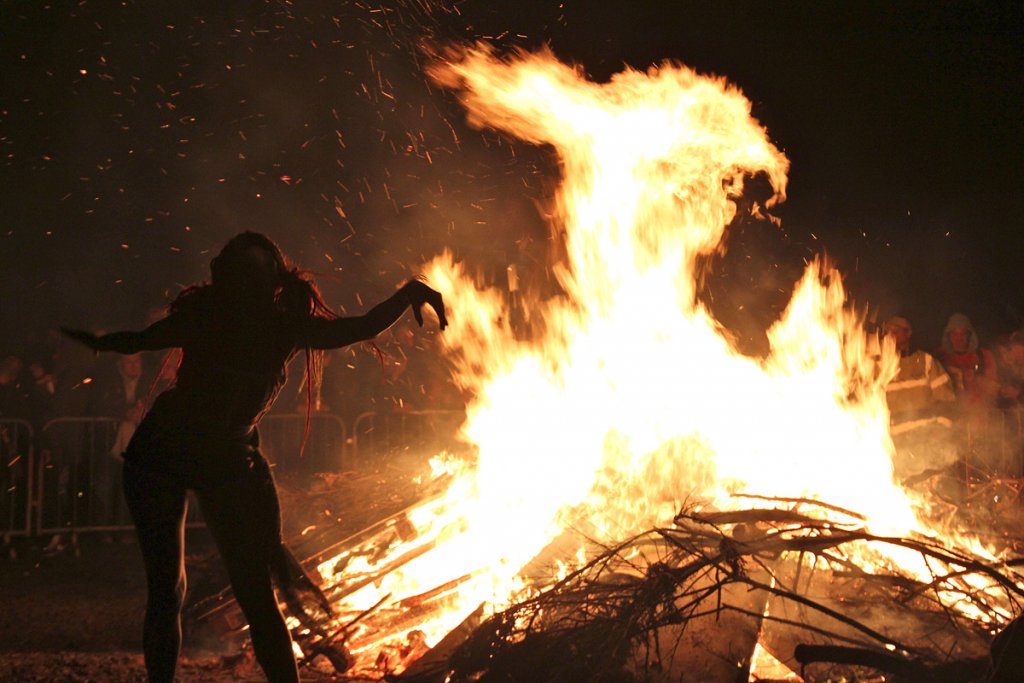
What is Beltane?
Beltane is one of the four Gaelic seasonal festivals—along with Samhain, Imbolc, and Lughnasadh. The Celts divided the year into two main seasons. Winter (Samhain) starting on November 1st, and summer (Beltane) beginning on May 1st. At Beltane, celebrants would perform rituals to protect the cattle, crops, and people and encourage growth and fertility.
Some people believe that during these two points of the year, Samhain and Beltane, the boundaries, known as the veil, between the human world and the Otherworld are temporarily thin. People who celebrate Beltane believe that fairies and other supernatural beings roam freely in the human world at those times. Therefore, to prevent humans from ending up in the land of the fairies, crop failures, and livestock mischief, certain protections are administered against the enchantments of supernatural beings, protecting those of this world.
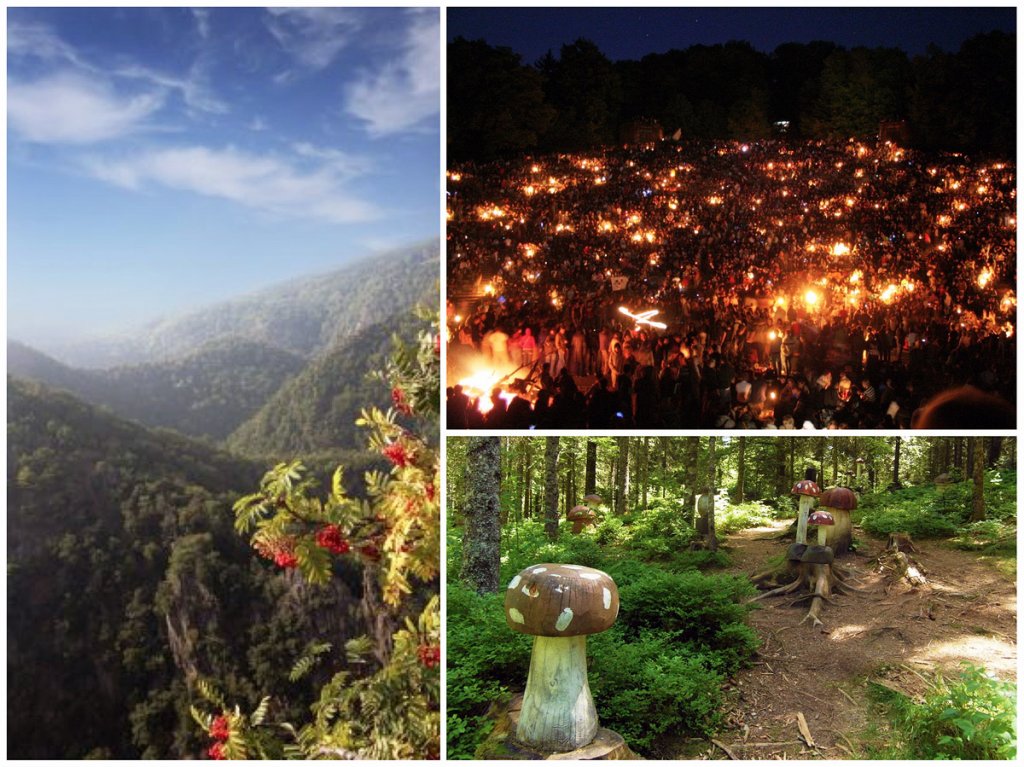
Walpurgis Nacht
In Germany, the festival is called Walpurgis Night. It’s also known by this name in many of the Scandinavian countries. This celebration can be traced back to Pagan fertility rites honoring the coming of Spring. These rituals also harken back to the belief that the veil between this world and the Otherworld was thin and that it was necessary to appease fairies and other creatures not of this world.
Walpurgis Night celebrations include bonfires and maypole dancing. In fact in Bavaria, the celebration is called Maypole Day.
Walpurgis Witches
Descriptions of Witches’ Sabbaths in 15th and 16th-century literature led to the belief in some Germanic cultures that witches, led by Frau Holle, gathered on the Brocken, the highest peak in the Harz Mountains, in central Germany on April 30th. There is even a plateau in the mountain range known as Hexentanzplatz, which means “Witches Dance Floor.” The older folklore around this is that Frau Holle led a dance to melt the remaining snow and welcome in the Spring.
Who is Saint Walpurga?
To counteract witchcraft on this night and legitimize a festival day so entwined with the local culture, the church established the Feast of Saint Walpurga (Valborg in Swedish) on the same night. Saint Walpurga is traditionally associated with May 1st because, in a medieval account, she was canonized on that date in 870. The church also put forward the belief that Saint Walpurga was efficacious against evil magic. So christians would pray to her to intervene and protect them against witches.

Modern Beltane
The festival of Beltane, in some part or other, persisted until the 1950s in the British Isles and also parts of mainland Europe, like Germany, Austria, and some of the Slavic and Baltic countries. In many areas where these traditions held on the longest, the local communities still celebrate them today as cultural events, mainly in parts of Ireland, Cornwall, Germany, the Scottish Borders, Scandinavia, and North America (where immigrants brought the celebration from the locations named).
Why We Celebrate Beltane
Although we live in modern times, our own Ancestors celebrated the seasonal tides for millennia before. It’s still imprinted on our DNA. We still notice seasonal changes; our bodies still respond to those changes. We still long to connect in a deeper way to seasonal change. Therefore, by celebrating these holy days and the changing seasons, we can connect to something older than us that is still very much a part of us and our heritage.
The monthly guides I write try to shed light on that very natural and human feeling and give some practical, relevant, and down-to-earth ways to answer that ancient call in modern times.
For us modern folk, seasonal changes may bring better or worse weather, or longer or shorter days depending on the time of year, but in earlier times, these seasonal changes were much more important and there was a lot more riding on them. In some instances, it meant life and death. Illness abounded in tightly closed spaces and family members were often lost in the colder seasons. So as the weather got warmer and things began to grow again, or the seeds that were sowed in the spring were beginning to blossom, it was a time to celebrate being alive, and being able to enjoy the next several months without too much worry, except for witches and fairies, that is.
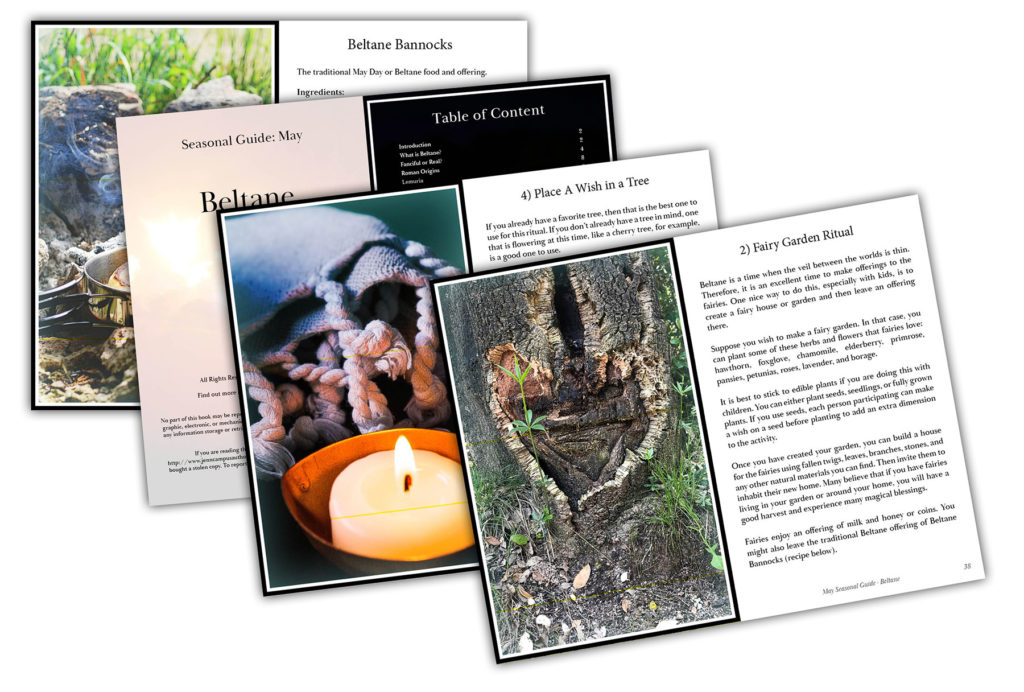
How We Celebrate Beltane
Beltane is a wonderful holiday to spend with children and family. Yes, there are strong fertility connotations to the celebrations, but when celebrating with family, it is easy to focus on the new growth in nature – trees popping with buds and wildflowers blooming.
There are many traditional family-friendly activities, like bathing in May Dew, Bringing in the May, creating flower crowns, and making a Maypole. You can also create a Fairy Garden and have a Fairy Tea Party for your new guests. You can find the specifics for all these activities (including recipes) in the Beltane Guide. Many people celebrate simply by enjoying the outdoors. Going on picnics is a popular activity for many folks. Children love being outside and learning about nature and can easily connect to the magic that occurs as the seasons change.

Sadly, this year it is raining, and so in anticipation of dreary weather, we decided to find a way to celebrate indoors. Since Beltane is a fire festival (learn more in the guide), we will light a fire in our fireplace and make honeycakes (recipe below) together, typical fare for Beltane festivals.
It is well known that fairies love honey, and so we will leave some out for them, asking them to bless our family with good fortune all summer long.

Sign up for my newsletter and get access to a FREE sample the book:
A GUIDE TO CELEBRATING THE 12 DAYS OF YULE Book
A concise, fun, and easy to follow guide for celebrating the 12 Days of Yule (Heathen-style!), this guide includes Activities for each of the 12 days, Recipes, Prayers, Folklore/ History, Rituals, Crafts, Traditions. All activities are family-friendly but also great for individuals.
Fried Honey Cakes

Fried Honey Cakes Serves: 1 1/2 dozen I am not sure where this recipe originates, but honeycakes are typical fare for Beltane celebrations. These cakes can be left in the garden to please the fairies. If you plan to leave an offering be sure to double the recipe so you can enjoy some too.
Ingredients:
- 1/2 cup sweet white wine
- 1 egg
- 2/3 cup all-purpose flour
- 1/8 teaspoon salt
- 1/4 teaspoon cinnamon
- 2 tablespoons sugar
- 1 cup honey
- 1/8 teaspoon nutmeg
- Olive oil for frying
Method:
- Beat the wine with the egg in a medium bowl.
- Combine the flour, salt, cinnamon, and sugar in a separate bowl, and then stir into the egg mixture.
- Let stand 30 minutes.
- Combine the honey and nutmeg in a small bowl.
- Heat about 1-inch of oil in a large skillet until hot, but not smoking.
- Drop the batter into the oil about 1 tablespoon at a time and fry until golden brown on both sides.
- Drain on paper towels.
- Dip into the honey.
How Do You Celebrate Beltane? Let me know in the comments.
Enjoy this video about Walpurgis Nacht from Faun
Related Posts:
May Seasonal Guide: Beltane
Thorn & Hedge Magic for Spring
Mabon! Happy Autumn Equinox!
Strawberry Magic (+cake)
Artichoke Magic: Spring in Sardinia
The Earth is our Mother: (Earth, Arbor & Yggdrasil Day)
Befana, The Winter Witch
Rowan: The Sacred Witch Tree

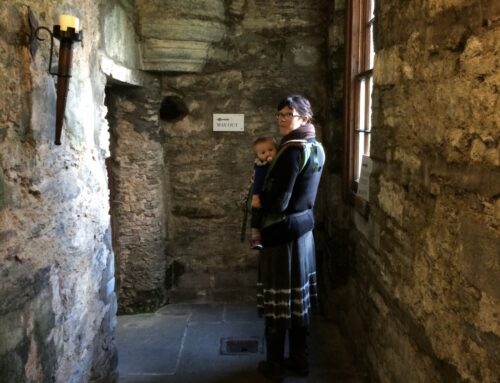

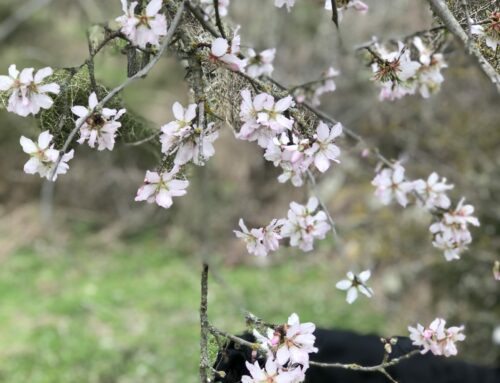



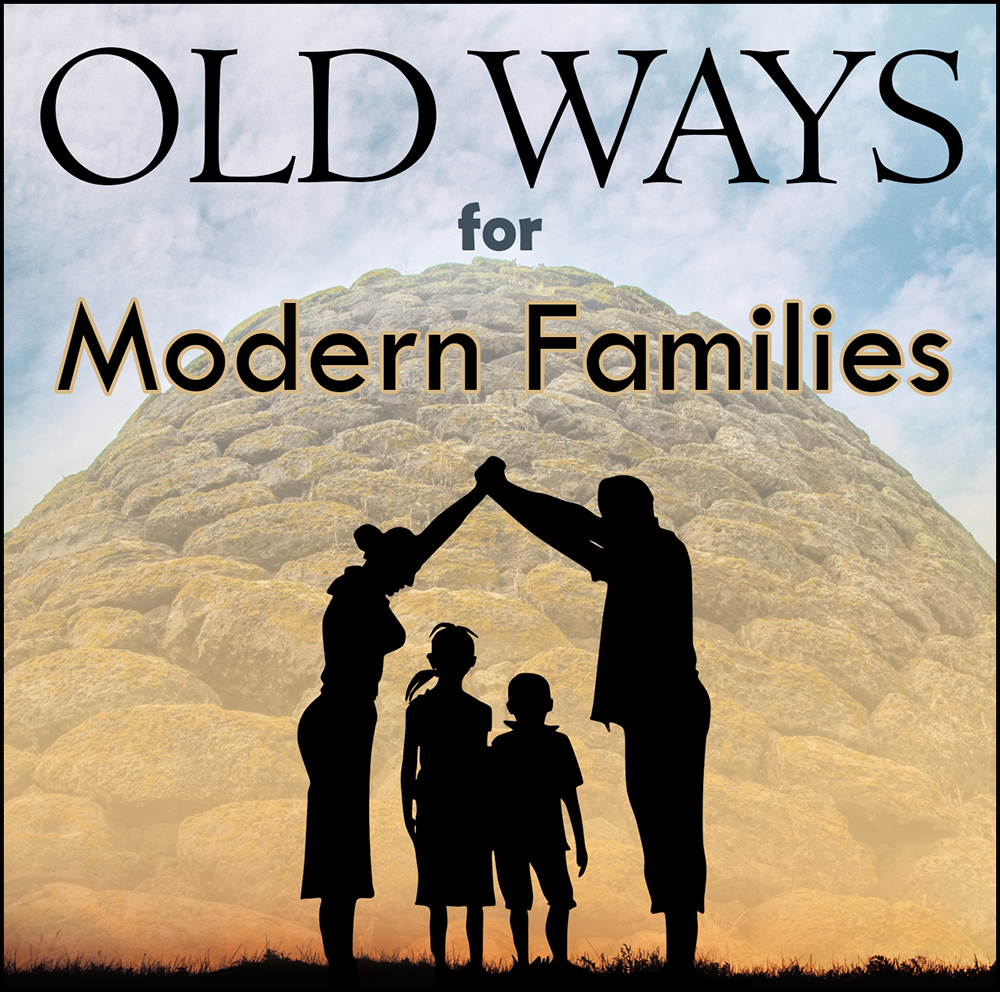
Leave a Reply